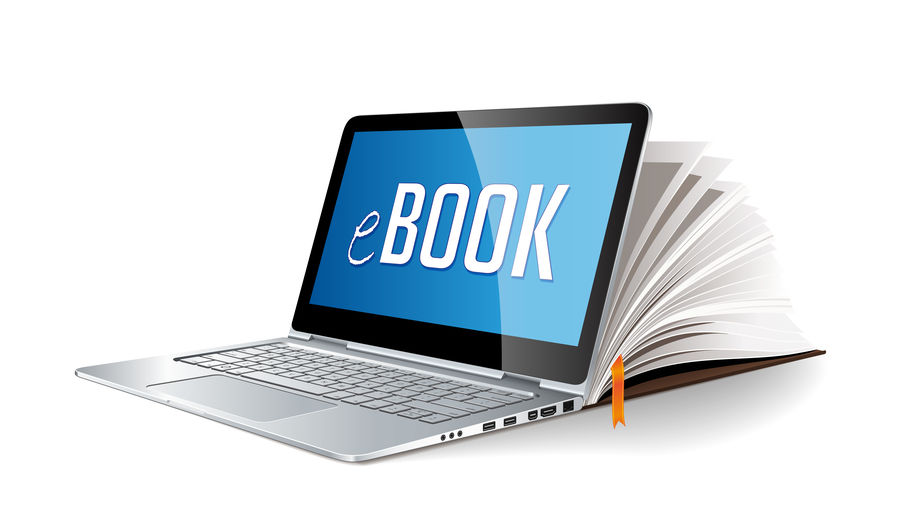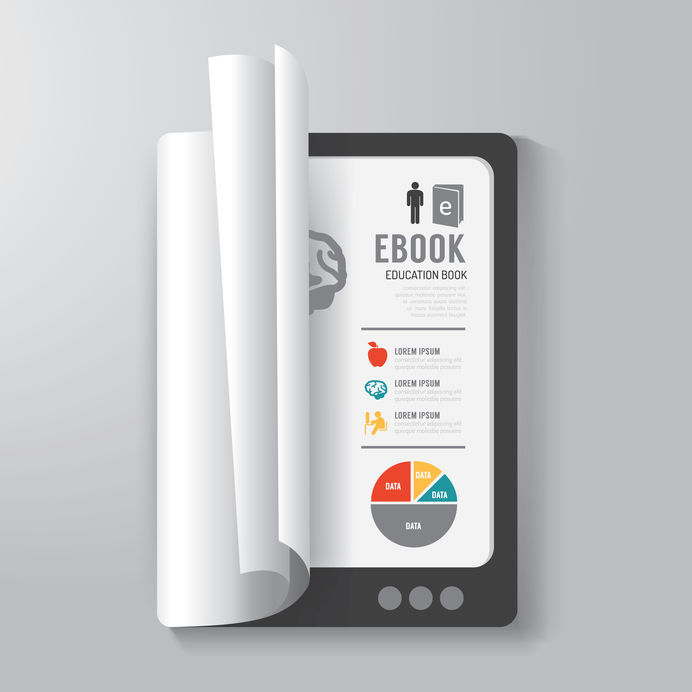
The popularity of e-books is on the rise. On a year-to-date basis, e-books were up 12.7 percent at the start of 2020, while print sales slowly decreased. And the increase continued throughout the year. U.S. e-book sales were up 39 percent as of June 2020. This spike is partly due to COVID-19 and the resulting retail closures and self-isolation.
But that’s not the only reason. The fact is, the world is moving more to digital everything. That includes authors and their audiences. Historically, traditional publishing is a time-consuming process that entails a long lead time and a significant monetary investment. As such, it can be a barrier and deterrent for many authors. On the other hand, e-books provide thought leaders with the ability to share their expertise through a more affordable means that can be faster to develop and easier to distribute.
Four Keys to E-book Success

- Decide on a valuable topic that has breadth and marketplace appeal. E-books typically range from 20-200 pages in length. They explore a topic in breadth. By taking a broad concept and covering many facets of it, e-books enable readers to gain in-depth knowledge and a complete understanding of the subject matter. In contrast to a white paper, which is more report-oriented and extremely focused, an e-book approaches a subject with a wide-angle lens.
- Convey value and emotion through storytelling techniques. When creating e-books, balance information, emotion and storytelling. A well-crafted e-book communicates to readers what the author’s expertise is without being self-serving. The text should take the reader on a compelling journey with the goal of making a difference in the reader’s life.
- Design is important. The visual elements of e-books represent an opportunity to showcase brand and expertise. Compelling graphics can capture the attention of readers, provide a more pleasurable reading experience and support brand equity. Graphics can include both design and information elements such as charts, graphs, infographics, photos, illustrations and even video. If you do not have a designer on your team, consider outsourcing to a graphic artist who understands your brand. Another great option is to use an e-book template, several of which are available from well-known creators such as Venngage, HubSpot and Adobe InDesign. Retail outlets such as Amazon and Barnes & Noble also provide templates along with distribution support.
- Promote through the right channels. There are many channels available to authors who want to get visibility for their books. These include your own website, social media and email that are already integrated into your communication strategies and are budget-friendly. Depending on how the book was developed, it can also be distributed through big-name outlets including Amazon and Barnes & Noble. By using a multi-prong approach, e-books can appear in numerous places with varied digital access. Ensure that your e-book is optimized for a variety of devices including mobile to reach all users. It is also important to create a landing page for your e-book on your own website to serve as its “home.” It is common practice to gatekeep that content with a form that requires visitors to provide contact information. This allows you to easily collect demographic, industry and contact information about your readers for both a clear picture of your readership and as a means for lead generation.
The Value of Producing E-books

Organizations and entrepreneurs who showcase thought leadership have an advantage in the marketplace. They are seen as experts, which provides a competitive edge and is reinforced when they author an e-book. For many people, writing a book is a lifelong dream that takes time, dedication and determination. It isn’t as simple as throwing words onto a page. Like with any writing project, authors need to identify their intended audience, have a “big idea,” conduct extensive research, craft a compelling message, write with purpose, get lots of feedback and edit, edit, edit. While the process can be challenging, in the end, the product will represent a significant achievement.
